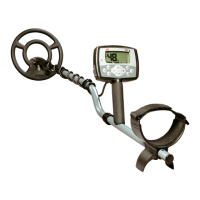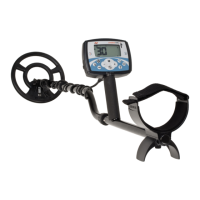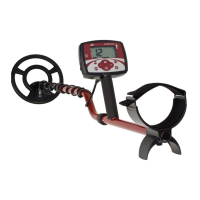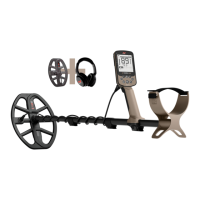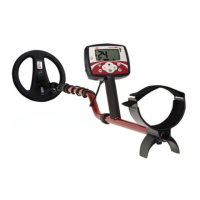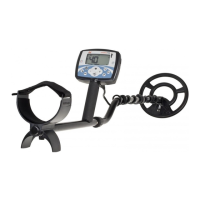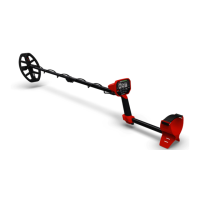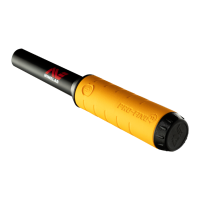Beach Detecting Hotspots
Search for coins and jewellery under jetties
and board-walks, beside steps and entry
ways to and from the beach.
Locate the areas where people swim the
most and detect in the deeper water there.
Venturing into the water can give you an
advantage over other detectorists who
remain on the sand. Research shipwrecks if
you are interested in historical finds.
Occasionally, the top layers of sand will be
washed away by stormy weather conditions,
exposing some deeper layers that often
contain good targets.
Difficult Beach Areas — Black Sand
Some beaches contain black sand which
has a high natural iron content and is
often magnetic. This causes continuous
false ferrous detections, making normal
beach detecting difficult. In this scenario,
first Ground Balance the detector. If there
are still false detections after Ground
Balancing, then reduce the Sensitivity.
Optimised for all salty conditions — dry
sand, wet sand, surf, underwater.
Beach Mode is for salt water beaches including dry sand, wet sand, surf
and underwater conditions. The salt that is typically present causes the
sand and water to be very conductive, causing salt noise to be detected.
Beach Mode uses a specialist salt noise rejection configuration and other
single frequencies can’t be selected.
Beach Mode specifically identifies any residual salt response and assigns
a Target ID of 0 (zero) — indicating that it's an unwanted target — so
that desirable low conductive targets such as gold chains can readily be
detected with minimal interference from the salt-water. The Recovery
Speed is relatively high to further reduce unwanted salt-water signals,
without greatly sacrificing detection depth.
Beach Profile 1 — Wet and Dry Sand
Beach 1 is most useful for detecting in wet and dry beach sand and also
in shallow water where conductive salt signals are prevalent. It has good
sensitivity to coins and small to large jewellery. Beach 1 uses a lower
Recovery Speed to maximise depth performance across all targets.
Beach Profile 2 — Underwater and Surf
Beach 2 gives the best results for detecting underwater with the coil fully
submerged, or in surf where the coil is intermittently submerged. This
profile may also be useful in dry conditions where there are extremely
high ground noise levels. Beach 2 has a faster Recovery Speed to aid in
rejection of the salt water signals.
13
CONTENTS
Beach

